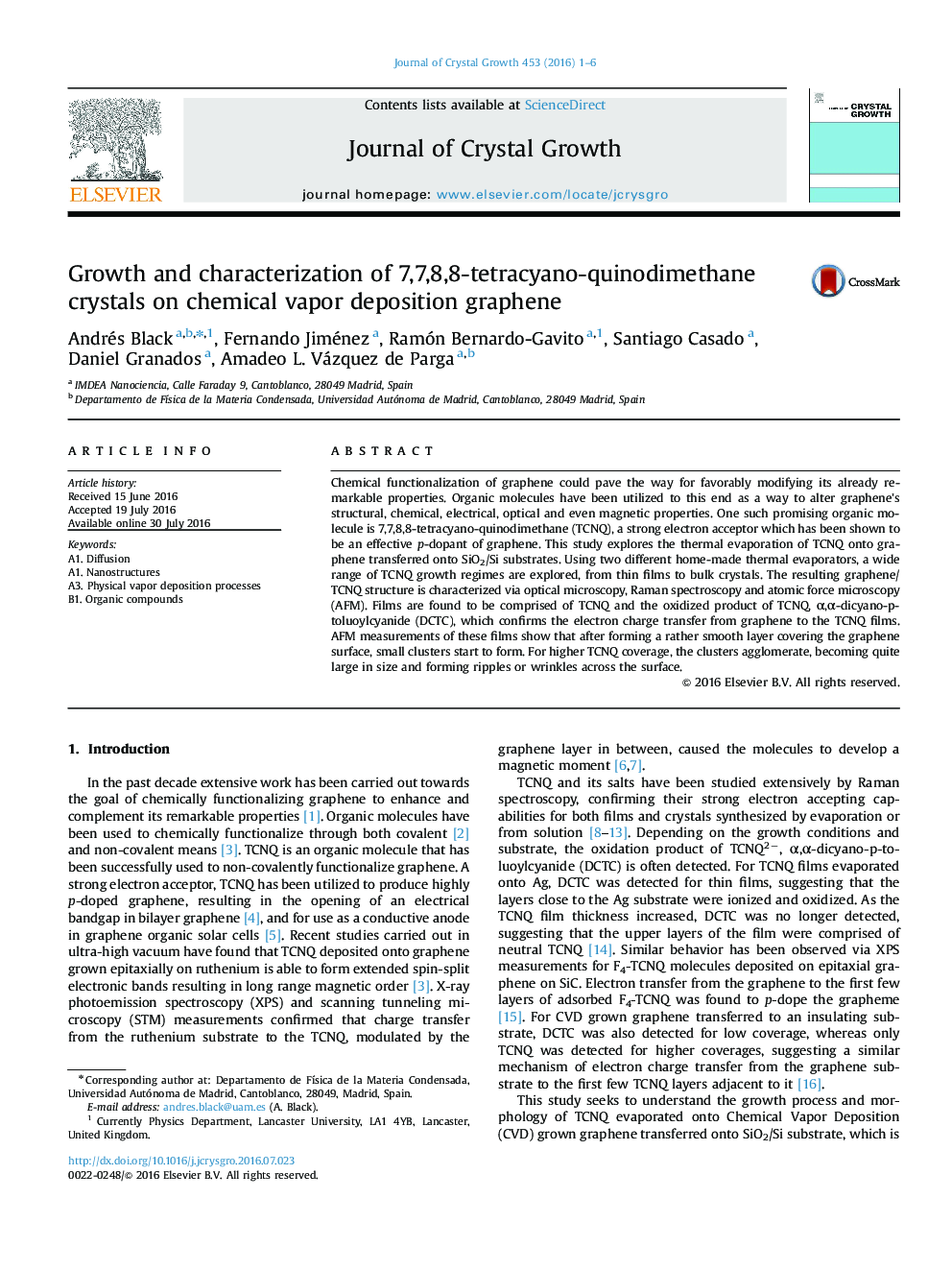| کد مقاله | کد نشریه | سال انتشار | مقاله انگلیسی | نسخه تمام متن |
|---|---|---|---|---|
| 1789450 | 1524376 | 2016 | 6 صفحه PDF | دانلود رایگان |
• Bulk TCNQ crystals were succesfully grown via thermal evaporation onto CVD graphene by maintaining the substrate at or close to ambient temperature.
• Varying the growth conditions resulted in different coverage and morphology of the TCNQ crystals.
• By heating the graphene substrate, thin TCNQ films were obtained on the graphene surface.
• Raman spectroscopy confirmed that for low TCNQ coverage films, there was charge transfer from the graphene to the TCNQ.
• AFM measurements of TCNQ films show that as coverage increases, micro-crystals begin to form, forming ripples throughout the graphene surface.
Chemical functionalization of graphene could pave the way for favorably modifying its already remarkable properties. Organic molecules have been utilized to this end as a way to alter graphene's structural, chemical, electrical, optical and even magnetic properties. One such promising organic molecule is 7,7,8,8-tetracyano-quinodimethane (TCNQ), a strong electron acceptor which has been shown to be an effective p-dopant of graphene. This study explores the thermal evaporation of TCNQ onto graphene transferred onto SiO2/Si substrates. Using two different home-made thermal evaporators, a wide range of TCNQ growth regimes are explored, from thin films to bulk crystals. The resulting graphene/TCNQ structure is characterized via optical microscopy, Raman spectroscopy and atomic force microscopy (AFM). Films are found to be comprised of TCNQ and the oxidized product of TCNQ, α,α-dicyano-p-toluoylcyanide (DCTC), which confirms the electron charge transfer from graphene to the TCNQ films. AFM measurements of these films show that after forming a rather smooth layer covering the graphene surface, small clusters start to form. For higher TCNQ coverage, the clusters agglomerate, becoming quite large in size and forming ripples or wrinkles across the surface.
Journal: Journal of Crystal Growth - Volume 453, 1 November 2016, Pages 1–6
